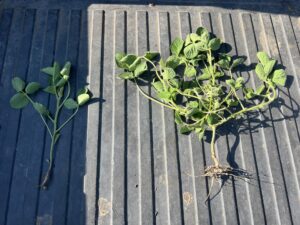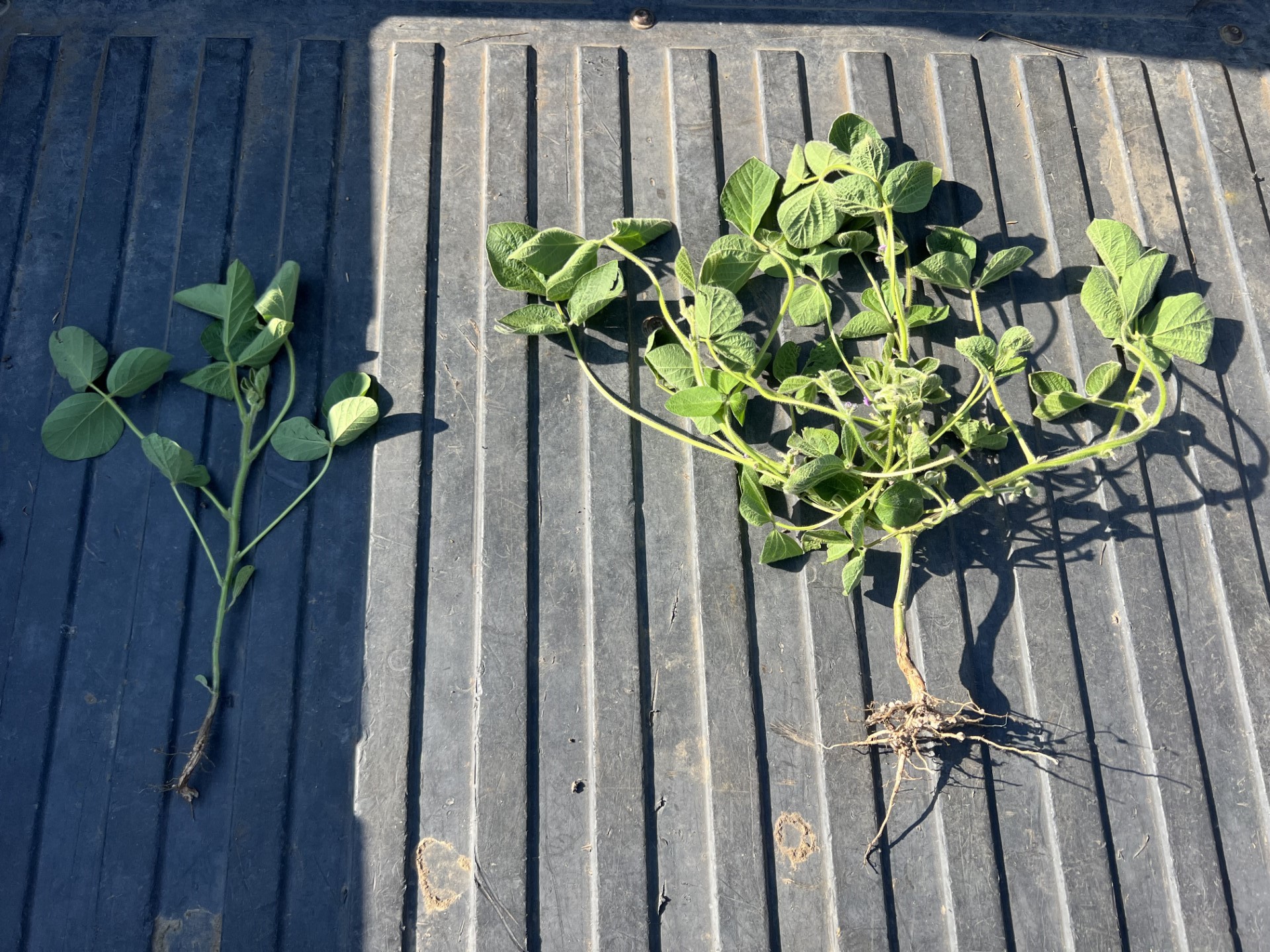By Stan Wise
Alex Frasier has spent a lot of time studying what it takes to grow a successful crop. After studying ag production and precision technology at Lake Area Technical College, he has worked in ag retail and currently works as an agronomist in Aberdeen, SD. He also farms with his parents, Jayme and Amie Frasier, who are the third generation on Frasier Farms near Faulkton, SD. Frasier lives with his wife, Sadie, and daughter, Franki, in Faulkton.
The Frasiers run a 900-acre no-till crop operation, growing corn, soybeans, spring wheat, and cover crops. Their innovative efforts to improve their land has led to lower input costs and higher yields.
“I got very lucky in the sense my dad let me have lots of input on farm decisions, in a very collaborative effort, coming right out of college,” Frasier said. “We make a great pair. He is very mechanically inclined, and I understand the crop input side better.”
Frasier’s soil health journey started as a mission to become more efficient with crop inputs. Yearly soil and tissue samples were showing excess nitrogen, and in 2017, the Frasiers decided the farm should begin to cut back on its fertilizer program.
“We started a weaning-off process of the petrochemical fertilizers and chemicals. In 2016 we were using 1.1 pounds of nitrogen per bushel of corn,” Frasier said. “Today, we are at 0.7 pounds, and I still think we over fertilize, but we are gradually getting that number down. I believe we can get to around 0.35 to 0.4 pounds of nitrogen per bushel in the next 5-7 years without any drop off in yield.”
When the Frasiers plant spring wheat, they follow it with a legume-heavy cover crop, but that’s not the most interesting thing they do with cover crops.

The soybean plant on the left came from a mono crop soybean field planted on 30-inch rows. The plant on the right was planted by the Fraisers on 15-inch rows interseeded with a mix of oats, rye, and flax. Both plants were seeded within three days of each other. Courtesy photo.
For the last four years, they have interseeded their soybeans with a cover crop mix. They plant about 150,000 seeds per acre on 15-inch rows with an air seeder in late April or early May before they plant corn. They also interseed a mix of oats, rye, and flax between the rows of soybeans in the same pass.
“Oats act as a natural white mold suppressor and has great early vigor in the spring to compete and not let weeds come in between rows of the beans,” Frasier said. “Rye naturally controls kochia through an acid it exudes from its roots and grows extremely fast in cool temps to compete against weeds. Flax is in the mix for the mycorrhizae fungi association. Mycorrhizae fungi create a network in the soil that can access nutrients and water to give to the plant.”
Frasier said he came up with this idea to meet the requirements of the Conservation Stewardship Program while saving on chemical costs, benefitting the soil, and increasing the organic matter in his soil. “My dad took a gigantic chance on the interseeding idea,” he said. “It’s a good idea, but it never happens without him being open to a totally foreign concept. He really stuck his neck out for me, and it means a lot to have someone believe in your idea.”
The Frasiers also had to clear the idea with their crop insurance provider. “We do our crop insurance through Farm Credit Services, and their only hold up was that the cash crop has to be the closest thing planted to a water hole, fence line, or any prevented planting acres,” Frasier said. The row closest to any of those items has to be soybeans, he said.
Also, the Frasiers must terminate the interseeded cover crop. “You can’t do any double cropping and qualify for crop insurance,” he said.
By interseeding the soybeans, Frasier said he is “planting the weeds” he knows he can control.
“It is very easy to kill oats, rye, and flax when planted together with our beans. We have almost completely gotten rid of kochia in our soybean fields. We spray it out when the oats and rye get into the boot stage so that we don’t have anything go to seed – I would say on average about 6 to 8 weeks after planting,” he said. “The weeds that are most troublesome for us now in our soybean fields are Canadian Thistle and pigeon grass, both of which are easily controlled in either soybean platform.”
So far, this idea has been a fantastic success, Frasier said. “Our 10-year actual production history before interseeding was 39 bushels per acre. In the four years we have interseeded our beans, we have averaged 54 bushels per acre. In 2023 our farm average on 500 acres was 70 bushels an acre,” he said. “Our interseeded beans out yielded area farms anywhere from 18-30 bushels in 2023. Yield isn’t everything, but it sure is nice to have an original idea and have it work better than we could have ever expected.”
Frasier said the most important lesson he has learned is to not be complacent. “Don’t be afraid to farm differently than the status quo. Challenge yourself and the ideas, beliefs, and practices you have been doing and try new things to see if there is a better way. Good isn’t good enough.”
That strategy is paying off for the Frasiers. “We have seen a direct correlation to lowering our fertilizer and chemical inputs and higher yields on our farm,” he said. “We have set four new farm yield averages for corn and beans since 2017 and raised the three best wheat crops on our farm in that same time period.”
“A lot of regenerative practices can be intimidating to the average row crop farmer,” Frasier said. “My mission as an agronomist is to help find a way to bridge the gap and demonstrate easy practical ways to bring more soil health to the average farmer.”
Frasier’s long-term goal on his family’s farm is to build the soil. “Every decision we make has to benefit the soil or reduce the damage we do to it, raise the numbers and species of biology in the soil, raise organic matter, and bring diversity to our acres.”
To learn more about soil health land management practices, visit www.sdsoilhealthcoalition.org.
Download a printer-friendly version of this article.

0 Comments